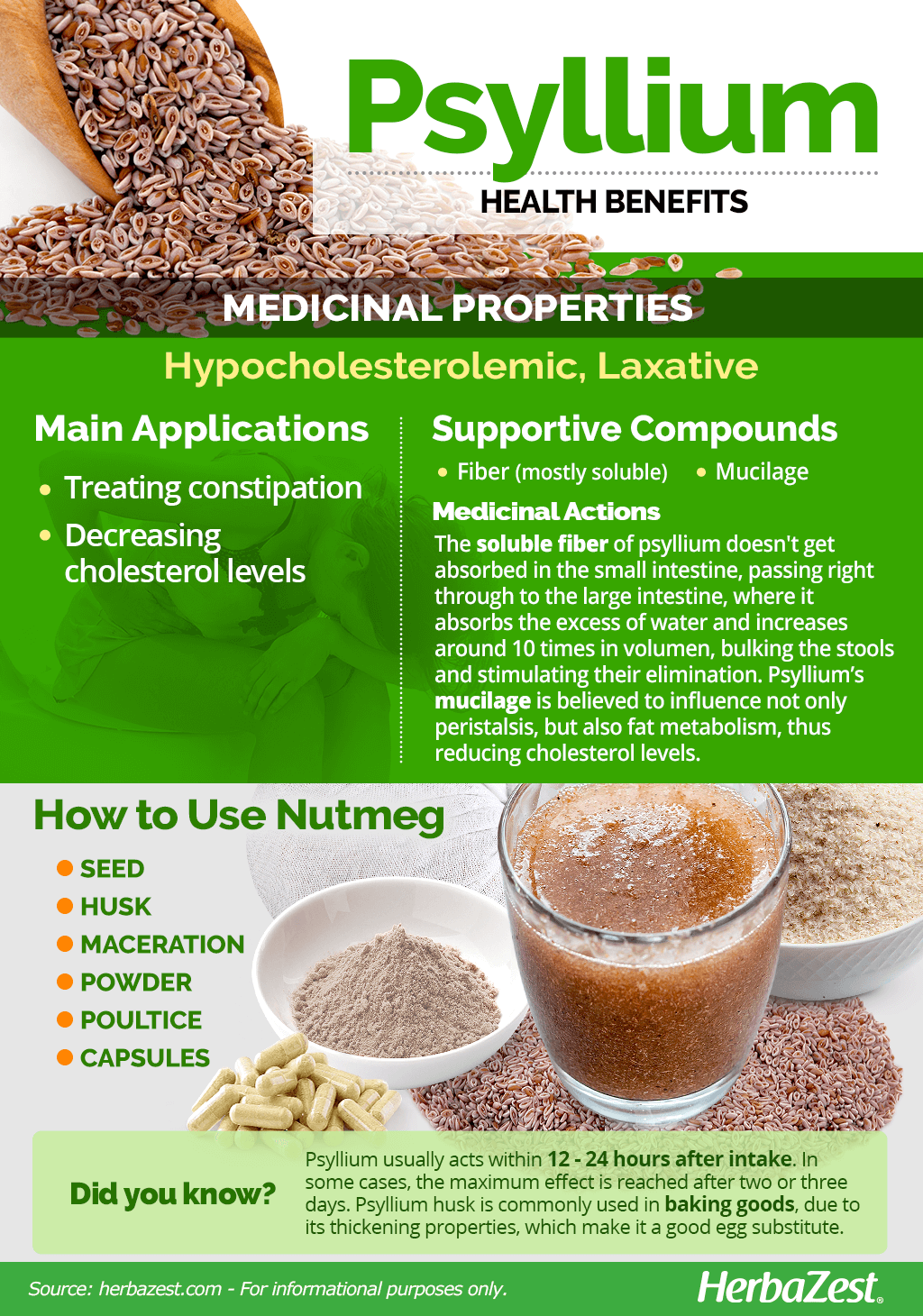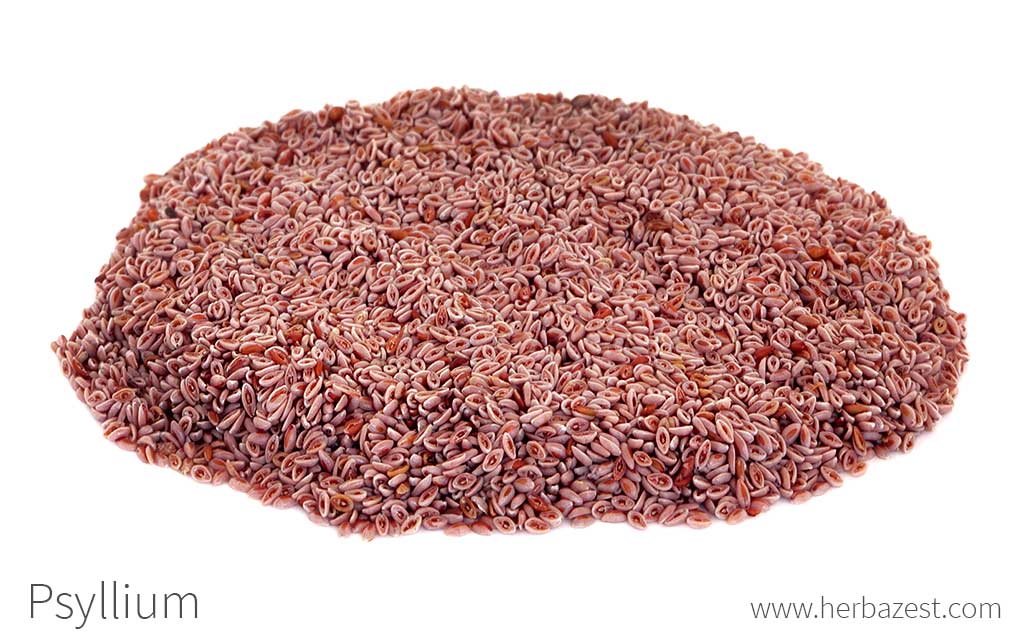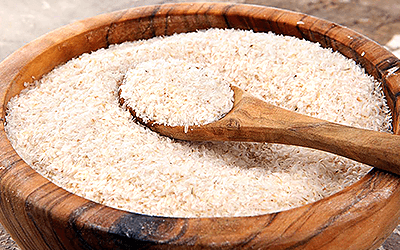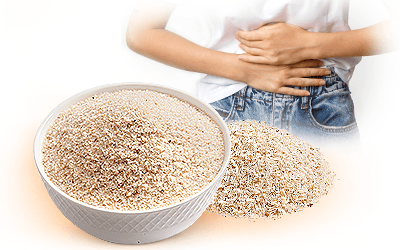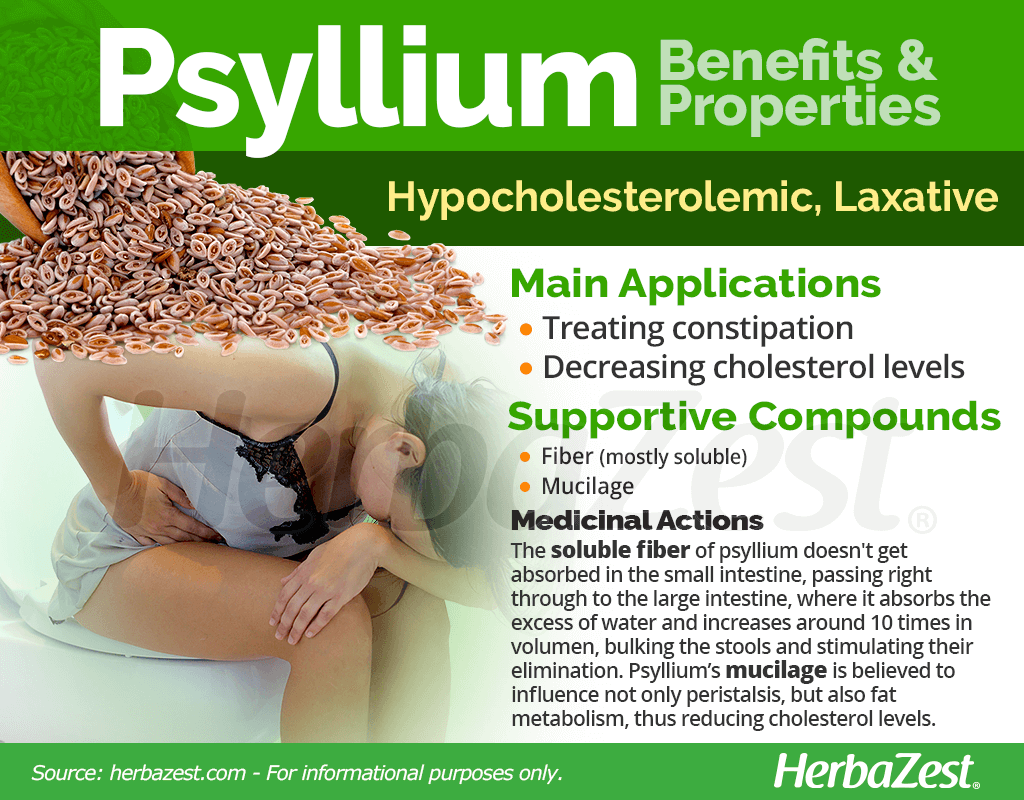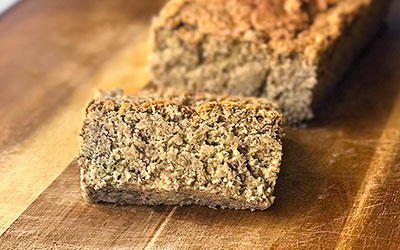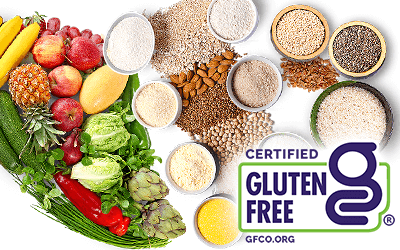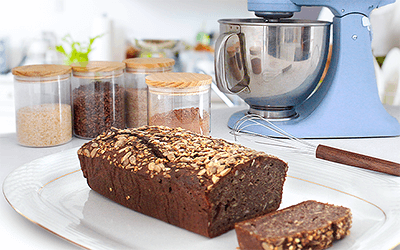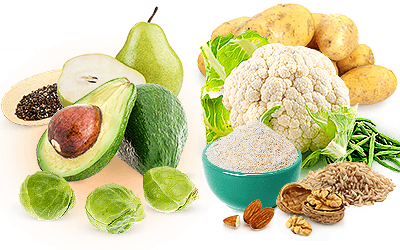Psyllium is native to the Indian subcontinent and Pakistan. Since modern diets are typically low in fiber and high in carbs and saturated fat, adequate fiber supplementation is highly recommended, not only to aid digestion, but also to support cardiovascular health.
Psyllium Medicinal Properties
- Medicinal action Hypocholesterolemic, Laxative
- Key constituents Fiber, mucilage
- Ways to use Capsules, Cold infusions, Food, Poultice, Powder
- Medicinal rating (4) Very useful plant
- Safety ranking Safe
Health Benefits of Psyllium
Regular, moderate intake of psyllium helps treat and prevent numerous gastrointestinal complaints, including diarrhea and constipation. It also promotes cardiovascular health, and it has been approved by the Food and Drug Administration (FDA), which recommends a daily intake of 3-12 grams in order to decrease the risk of heart disease.
Psyllium is commonly used for weight control as part of a low-fat diet as well as in diverticulosis and diabetes treatment. Studies have shown that its polyphenolic compounds have some antioxidant properties, but further research is needed.
Psyllium is primarily used for:
Treating constipation. Due to its fiber content, psyllium is effective for relieving constipation by increasing stool weight and promoting bowel movements.1
Relieving IBS symptoms. By reducing inflammation in the gut, psyllium may help relieve symptoms of irritable bowel syndrome (IBS) in both adults and children.2
Lowering cholesterol. Research has shown that taking psyllium as part of a healthy diet can reduce LDL-cholesterol levels in men and women with primary hypercholesterolemia.3
Additionally, preliminary research supports the following benefits of psyllium:
Improving cardiovascular health. Studies have shown that psyllium helps reduce various cardiovascular risk factors, including hypertriglyceridemia, high cholesterol, hypertension, and hyperglycemia.4
Lowering blood sugar. It has been shown that psyllium can help lower blood sugar levels by delaying intestinal transit, leading to a sense of fullness and slowing glucose absorption into the bloodstream.5
A DAILY INTAKE OF PSYLLIUM CONTRIBUTES TO THE RELIEF OF IBS SYMPTOMS.
Research has also shown that psyllium causes beneficial changes in the intestinal microbiota, especially in patients with constipation.6
Traditionally, psyllium has also been used as a demulcent, for treating urinary infections, as well as for the topical relief of skin infections.
How It Works
Psyllium is mostly composed by soluble fiber (and a smaller amount of insoluble fiber). This type of dietary fiber doesn't get absorbed in the small intestine, passing right through to the large intestine, where it is partially broken down by normal bacterial flora. In that environment, it absorbs the excess of water and increases around 10 times in volume, becoming a mucilaginous gel responsible for bulking the stools and stimulating their elimination.7
When it comes to improving cardiovascular health, some studies have shown that psyllium increases bile acid, which may help decrease fat absorption. Psyllium may also transform lipid metabolism by affecting the levels of proteins.8
Its mucilaginous gel is believed to influence not only the peristalsis, but also the absorption of nutrients, decreasing the absorption of cholesterol itself.9
Psyllium usually acts within 12-24 hours of consumption. In some cases, the maximum effect is reached after two or three days.
Other herbs that have mild laxative effects are prune and flax, while cardioprotective and anti-diabetic properties can also be found in blackcurrant and lucuma.
Psyllium Side Effects
Potential side effects include intestinal bloating, diarrhea, nausea, and mild abdominal cramping. It is recommended to start with a low dose and increase it gradually to minimize discomfort. Taking it with plenty of liquids (e.g. water, milk, fruit juice, or similar) will prevent choking or possible damage to the esophagus.
Psyllium Cautions
Possible contraindications include:
Allergic reactions to psyllium have been reported, including skin rashes, diarrhea, low blood pressure, shortness of breath, tachycardia, vomiting, and lightheadedness.
People who experience changes in their bowel habits for more than two weeks.
Undiagnosed rectal bleeding and failure to defecate following the use of a laxative.
Individuals suffering from abnormal gastrointestinal constrictions, diseases of the esophagus, potential or existing intestinal blockage (ileus), paralysis of the intestine, or megacolon.
People with difficulty in swallowing or any throat problems.
Precautions include:
The use of psyllium is not recommended in children of six years old and under.
Laxative bulk producers should be used only in cases when dietary changes are unsuccessful and always before using other purgative methods.
Psyllium should not be used without medical advice in patients experiencing abdominal pain, nausea, and vomiting, since these signs can indicate a possible intestinal blockage.
How to Consume Psyllium
- Edible parts Seed
- Edible uses Egg substitute
Psyllium is rich in mucilage, which has thickening properties, so it is commonly used in recipes as an egg substitute, making it a popular choice for vegan, raw, and gluten-free diets. Since it has no taste whatsoever, psyllium is used to thicken sauces and add fiber to baked goods, and it can be sprinkled over salads and soups.
Culinary applications aside, the health benefits of psyllium can also be obtained from supplements and home made herbal preparations.
Natural Forms
Seed. Whole psyllium seeds are the most natural way of consuming this herb. They can be used in baking goods to add extra fiber, or soaked before being consumed with plenty of water for constipation relief.
Husk. One or two tablespoons of psyllium husk can be mixed with a glass of water every day to promote regular bowel movements and control cholesterol levels. Psyllium husk can be added to baking goods to enrich fiber content and enhance texture.
Maceration. For constipation relief, psyllium seeds can be soaked in water overnight and then taken before going to bed.
Poultice. When psyllium husk is soaked in an infusion of calendula, it makes an effective poultice for external treatment of skin infections, boils, abscesses, and whitlows.
Powder. Just like the husks, one or two daily tablespoons of psyllium powder are easy to mix with water, juices, or smoothies. It can also be used as a thickener for sauces, soups, and many culinary dishes, in order to reap psyllium's hypoglycemic and cardioprotective effects.
Herbal Remedies & Supplements
Capsules. Psyllium can be taken as a supplement in capsules. To make the most of its cardioprotective and digestive effects, it is recommended to take a psyllium capsule with every meal.
AS A DIETARY SUPPLEMENT, PSYLLIUM CAN BE FOUND COMBINED WITH OTHER SOURCES OF FIBER.
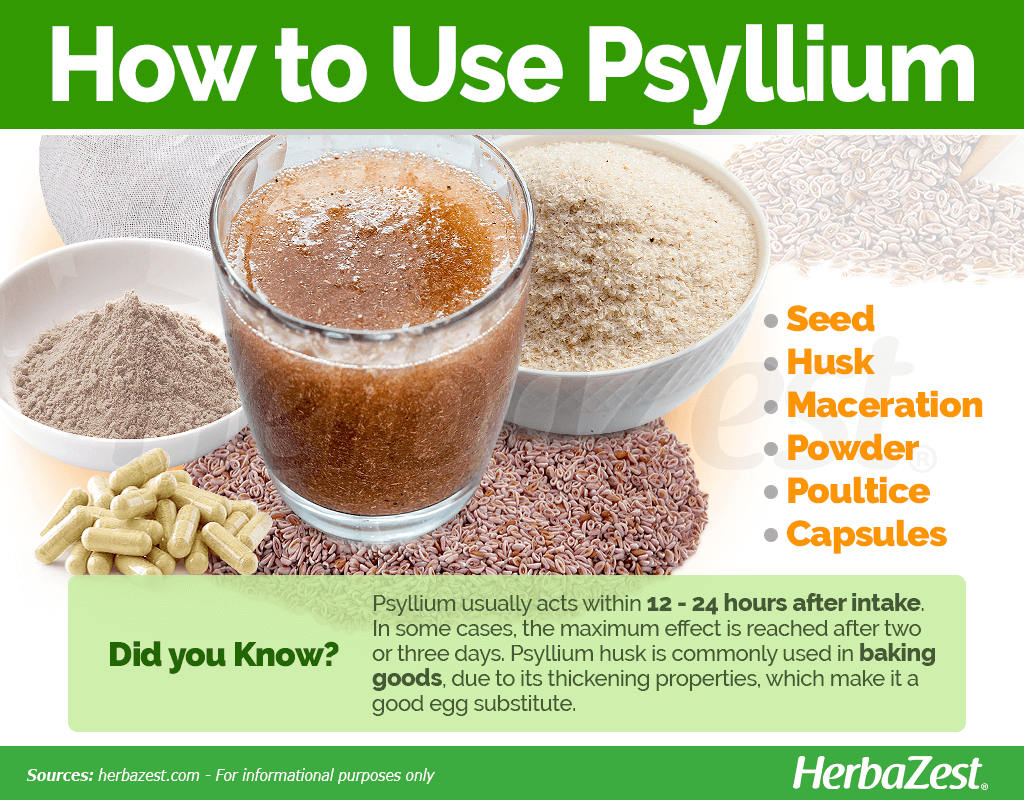
Growing
- Life cycle Annual
- Harvested parts Seeds
- Light requirements Full sun
- Soil Loamy sand
- Growing habitat Arid or desert regions
- Planting time Early spring
Psyllium is an annual herb that grows up to 12 - 18 inches (30 - 46 cm) tall. Leaves are opposite, linear, or linear lanceolate, reaching 0.4 x 7.5 inches (1 x 19 cm). After about 60 days of planting, many small, white flowers bloom. The seeds are enclosed in capsules that open at maturity. In India, psyllium is cultivated from October to March during the dry season, while in France, sowing takes place in March, after the winter.
Growing Guidelines
Seeds are sown at a rate of 15 - 30 pounds (7 - 13.5 kg) per hectare, and they are mixed into the uppermost layer of soil using a weed broom and then irrigated.
Psyllium needs clear, sunny, and dry weather, as well as light, well-drained, sandy loam soils.
The temperature range that this crop prefers is 59 - 86°F (15 - 30°C).
Water requirements are moderate for this crop.
Additional Information
- Other uses Animal feed
Plant Biology
Psyllium is a low-growing, herbaceous perennial with dark green, egg-shaped leaves form a rosette, and are generally smooth or slightly hairy, with wavy margins and three or more clearly-defined, tough and fibrous parallel veins.
Classification
Psyllium is the common name for several members of the plant genus Plantago. Plantago ovata and Plantago afra are other generic names for these species, all of them part of the Plantaginaceae family.
Related species
The genus Plantago has more than 200 species that are grown all over the world, but P. ovata and P. afra are commercially cultivated in several American, South American, South Asian, and European countries as a major seasonal crop.
Historical Information
All species of Plantago are indigenous to India and Pakistan, and have been used for over a thousand years in both Ayurvedic (Hindu) and Unani (Arab) medicine, for the treatment of digestive problems. However, the cultivation and medicinal use of the psyllium plant and seeds can be traced back to 250 BCE, in China.
The first settlers brought psyllium to North America, where native Americans gave it the name of "white man's foot", as the plant was often found growing along well-trodden foot paths, and used it topically, to draw out the poison of rattlesnake bite, soothe rheumatic pain, treat wounds, and wash out eye infections. They also ate the fresh, young leaves and seeds of psyllium.
The word plantago, originally from Latin, means "sole of the foot," alluding to the shape of the leaves. Psyllium is a word of Greek origin, meaning "flea" in reference to the color, shape, and size of its seeds.
The seeds of psyllium have been used in Europe for intestinal health since the 16th century, and the early English called the plant "mother of herbs."
Economic Data
Psyllium is a plant that yields an outstanding 60 - 70% soluble fiber, eight times higher than oat bran. Most of the annual imports to the United States, the number-one consumer of psyllium, come from India and Pakistan, in amounts around 800 metric tons of whole seeds, and 3,000 tons of husks.
Other Uses
Gardening. Psyllium plants are commonly used to prevent soil erosion.
Pharmaceutical industry. Psyllium is utilized as a thickening agent for capsule formulation.
Food industry. Psyllium is added as fiber to a variety of products, such as health drinks, beverages, ice cream, cakes, jams, instant noodles, and breakfast cereals.
Fodder. Livestock animals are commonly fed with psyllium to aid their digestive system.
Sources
- Acta Universitatis Cibiniensis, Industrial Application of Psyllium: an Overview, 2015
- European Medicines Agency, Community herbal monograph on Plantago afra L. et Plantago indica L. , semen
- Journal of the Science of Food and Agriculture, Antioxidant activity and high-performance liquid chromatographic analysis of phenolic compounds during in vitro callus culture of Plantago ovata Forsk. and effect of exogenous additives on accumulation of phenolic compounds, 2016
- Medical and Healthcare Textiles, pp. 245-246
- The Essential Guide to Herbal Safety, p. 140
- University of California, Meet Psyllium: A Fiber Product with Potential Cardioprotective Effects, 2005
- Utah State University, Broadleaf plantain
- Encyclopedia of Herbal Medicine, p. 124
- MedlinePlus Herbs and Supplements, Fiber
Footnotes:
- Complementary Therapies in Medicine. (2018). Effects of psyllium vs. placebo on constipation, weight, glycemia, and lipids: A randomized trial in patients with type 2 diabetes and chronic constipation. Retrieved March 6, 2024, from https://pubmed.ncbi.nlm.nih.gov/30219432/
- Journal of Pediatric Gastroenterology and Nutrition. (2023). Efficacy of Oral Psyllium in Pediatric Irritable Bowel Syndrome: A Double-Blind Randomized Control Trial. Retrieved March 6, 2024, from https://pubmed.ncbi.nlm.nih.gov/36136861/
- The American Journal of Clinical Nutrition. (2000). Long-term cholesterol-lowering effects of psyllium as an adjunct to diet therapy in the treatment of hypercholesterolemia. Retrieved March 6, 2024, from
https://pubmed.ncbi.nlm.nih.gov/10837282/ - Journal of Functional Foods. (2023). The beneficial effects of psyllium on cardiovascular diseases and their risk factors: Systematic review and dose-response meta-analysis of randomized controlled trials. Retrieved March 6, 2024, from https://www.sciencedirect.com/science/article/pii/S1756464623004784
- Nutrition Journal. (2016). Soluble fibers from psyllium improve glycemic response and body weight among diabetes type 2 patients (randomized control trial). Retrieved March 6, 2024, from https://nutritionj.biomedcentral.com/articles/10.1186/s12937-016-0207-4
- International Journal of Molecular Sciences. (2019). The Effect of Psyllium Husk on Intestinal Microbiota in Constipated Patients and Healthy Controls. Retrieved March 6, 2024, from https://www.ncbi.nlm.nih.gov/pmc/articles/PMC6358997/
- Alimentarty Pharmacology & Therapeutics. (1995). Effects of psyllium therapy on stool characteristics, colon transit and anorectal function in chronic idiopathic constipation. Retrieved April 18, 2023, from: https://pubmed.ncbi.nlm.nih.gov/8824651/
- Journal of Clinical Gastroenterology. (2010). The right fiber for the right disease: an update on the psyllium seed husk and the metabolic syndrome. Retrieved April 18, 2023, from: https://pubmed.ncbi.nlm.nih.gov/20616745/
- American Journal of Clinical Nutrition. (1999). Effects of psyllium on glucose and serum lipid responses in men with type 2 diabetes and hypercholesterolemia. Retrieved April 18, 2023, from: https://pubmed.ncbi.nlm.nih.gov/10500014/
